Your cart is currently empty!
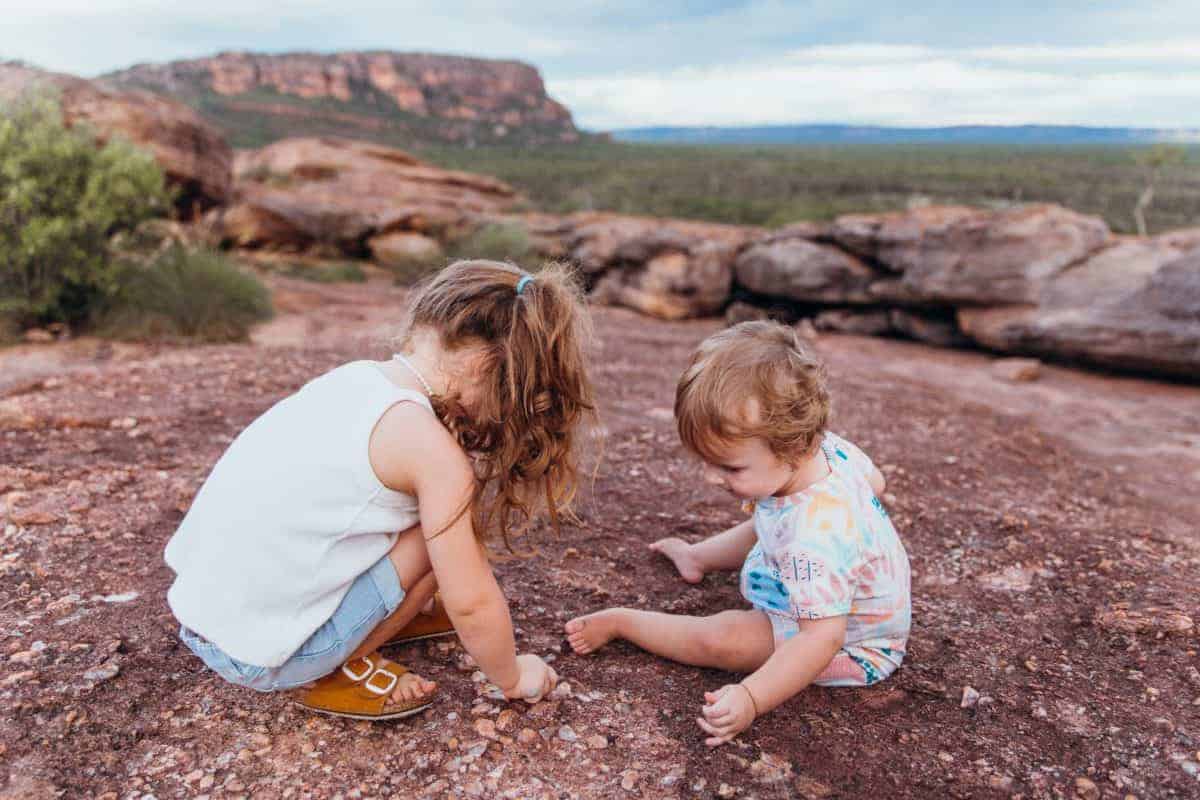
Kakadu National Park, Australia with Kids
Kakadu National Park is Australia’s largest terrestrial national park, situated in the Northern Territory’s tropical north. It would be hard to find a place that is more unique or diverse as this Aboriginal-owned World Heritage-listed National Park. It’s an incredible place. Today, we have Jodie of Territory Mama here to take you along on a trip through Kakadu and give you all the recommendations, tips, and advice you need to plan a trip to Kakadu National Park with kids.
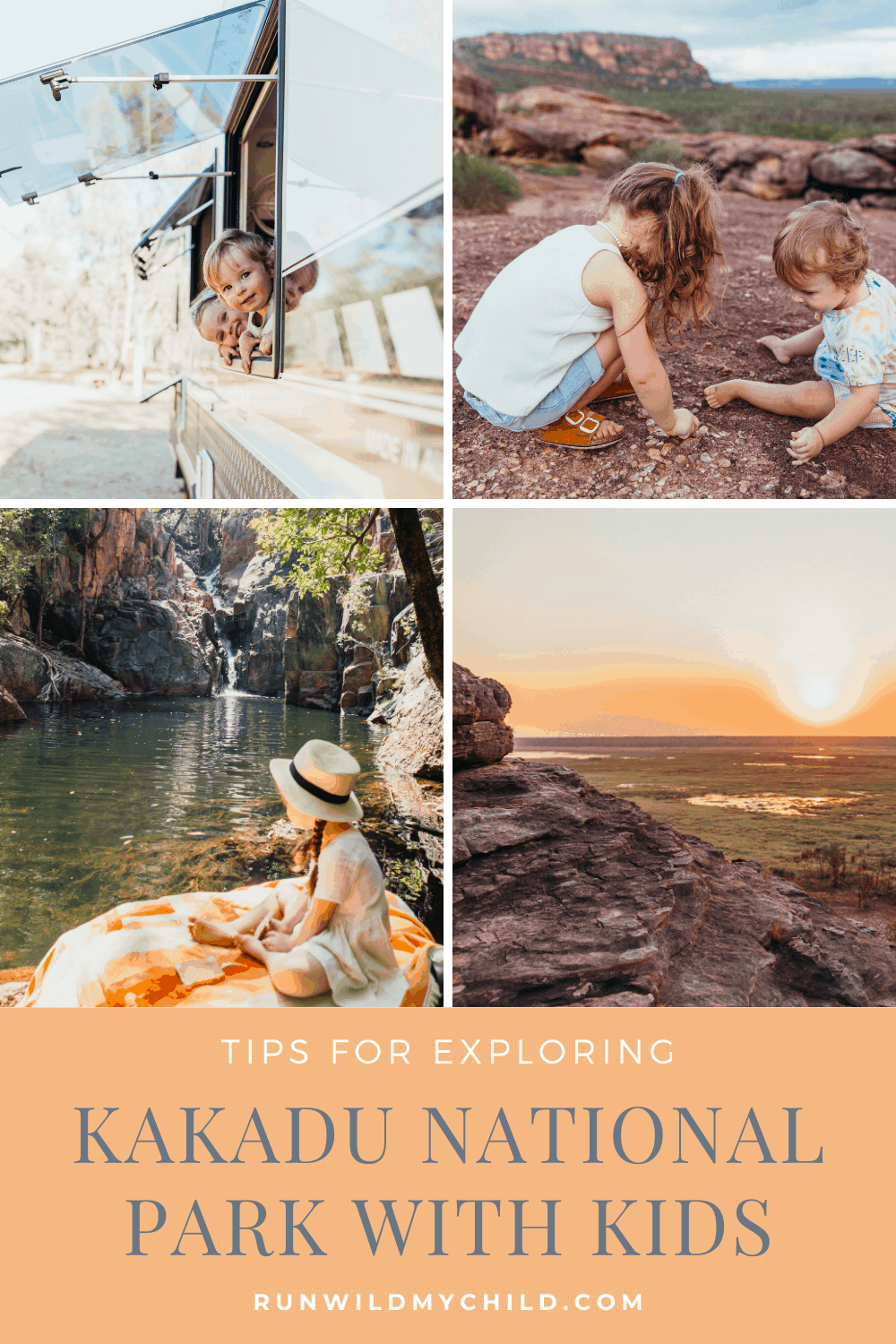
Kakadu National Park
Kakadu National Park spreads across almost 200kms from north to south and over 100km east to west. The diversity of landscapes it covers range from coastal and estuaries to billabongs and floodplains, through to the rocky ridges and stone country of the Arnhem Land Escarpment. These landscapes are home to more than one-third of Australia’s bird species and one-quarter of it’s freshwater and estuarine fish species. Not only does Kakadu extend across such spectacular landscapes and diverse wildlife, but it’s home to the oldest living culture on earth.
But, the best part about Kakadu National Park is that it’s easily accessible for families. And there are lots of amazing outdoor experiences for families to discover together. It’s a truly magical place and you can’t understand quite how incredible it is until you experience it for yourself, but I’ll do my best to capture a little bit about what makes this place so special.
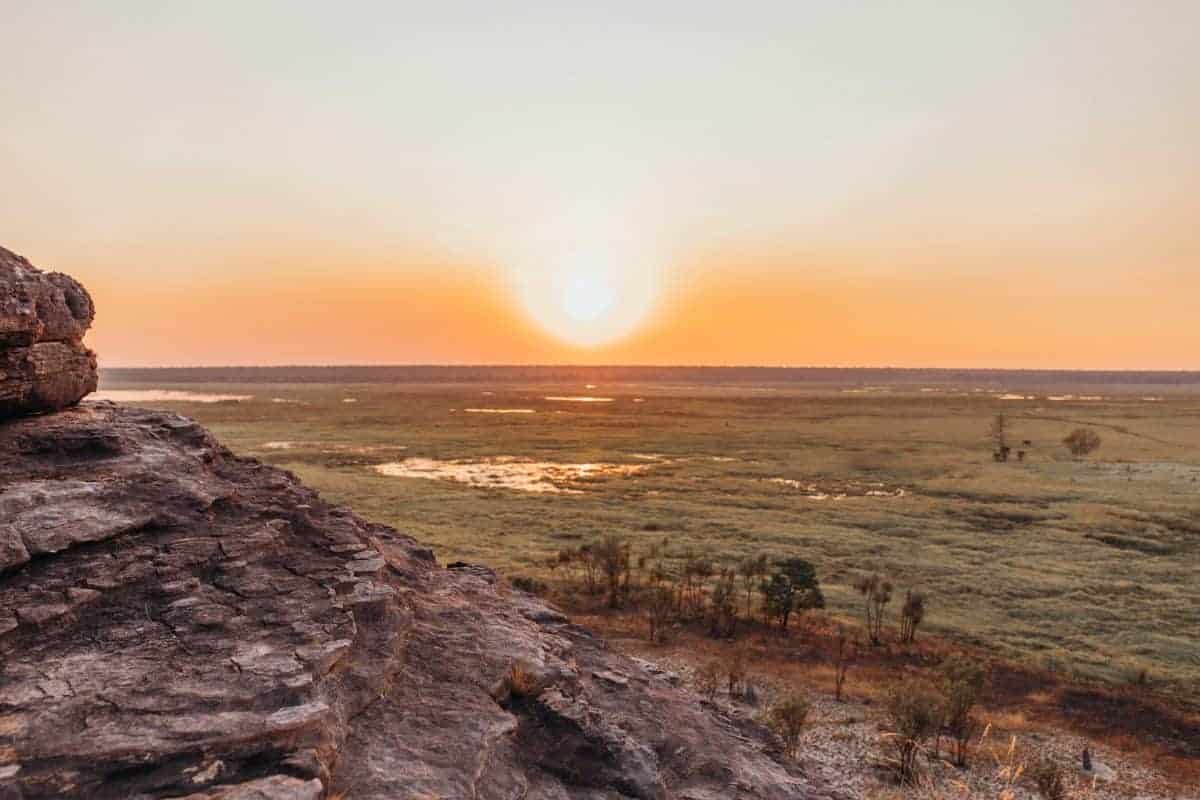
Things to do in Kakadu National Park with kids
There are so many things to do in Kakadu National Park with kids. I’ve broken activities down by a couple of different categories: cultural experiences, waterfalls, and magical sunsets. These three activities encompass a lot of other activities that can be done at these locations (hiking, swimming, animal sighting, camping, etc.).
Cultural experiences at Kakadu
The traditional owners Bininj Mungguy have lived and cared for this country for more than 50,000 years and you can experience firsthand their connection to the country through many of the cultural experiences and tours on offer within Kakadu.
Guluyambi Cultural Cruise – Kakadu Cultural Tours
The Guluyambi Cultural Cruise is a scenic boat tour upstream of the majestic East Alligator River. Your Aboriginal guide will provide insight into their culture, traditions, and beliefs. You will experience traditional hunting and gathering techniques and learn about the many uses for the plants and animals that call this area home. You may also spot many of the local saltwater crocodiles that inhabit this spectacular river. The cruise operates between May and November and is owned and managed by the traditional owners of Kakadu.

Yellow Water Cruises
Ran by the Indigenous-owned Kakadu Tourism, the Yellow Water Cruises offer a year-round boat cruise along the ever-changing Ngurrungurrudjba (Yellow Water) Billabong. It is recommended to take the cruise during sunrise or sunset when the wildlife is most active but many visitors undertake more than one cruise during their stay to experience the changes in wildlife at different times of the day. While cruising along the tranquil wetland there is an abundance of wildlife to encounter, up to 60 different bird species, saltwater crocodiles, wild horses, buffalo, and wallabies all in their natural habitat.
Warradjan Culture Centre
Warradjan Culture Centre was developed by the Aboriginal traditional owners of Kakadu to help tell their story. Displays include artifacts, bush tucker, and local artwork. During the dry season (April – September) local Aboriginal artists often conduct demonstrations here from painting to traditional weaving techniques and the kids are always welcome to join in.
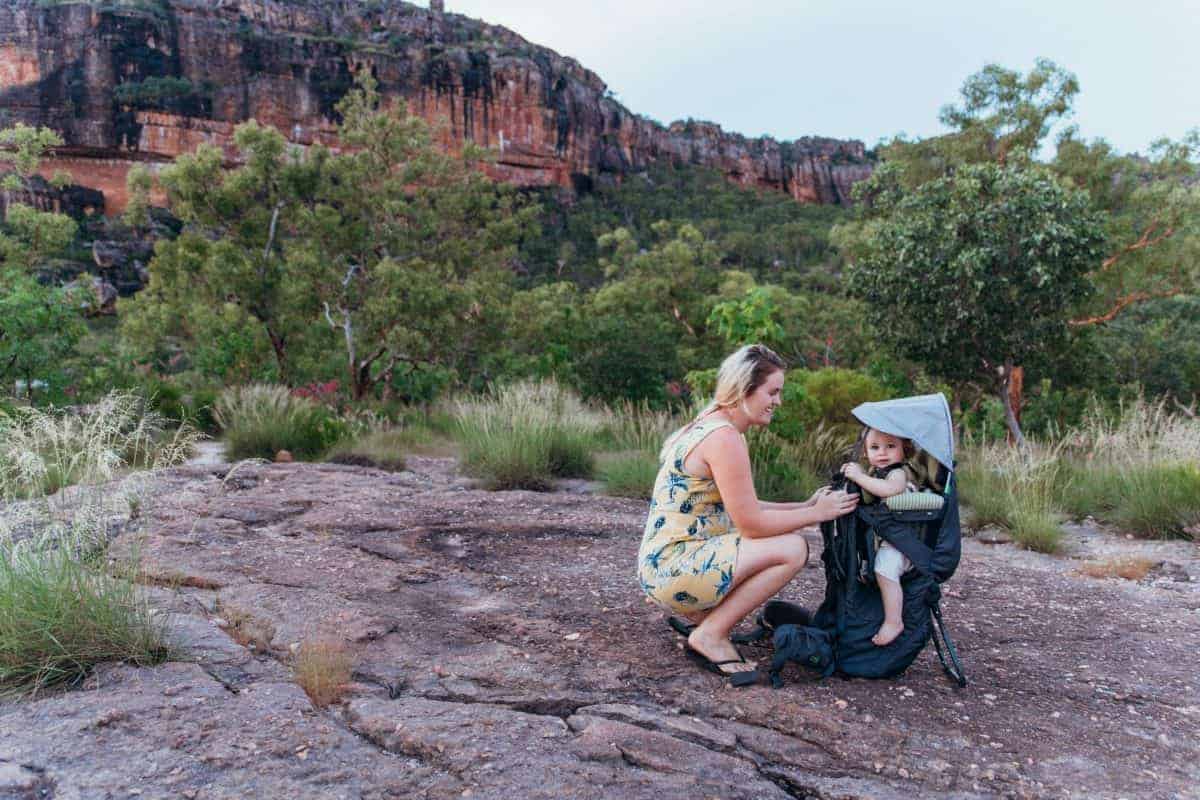
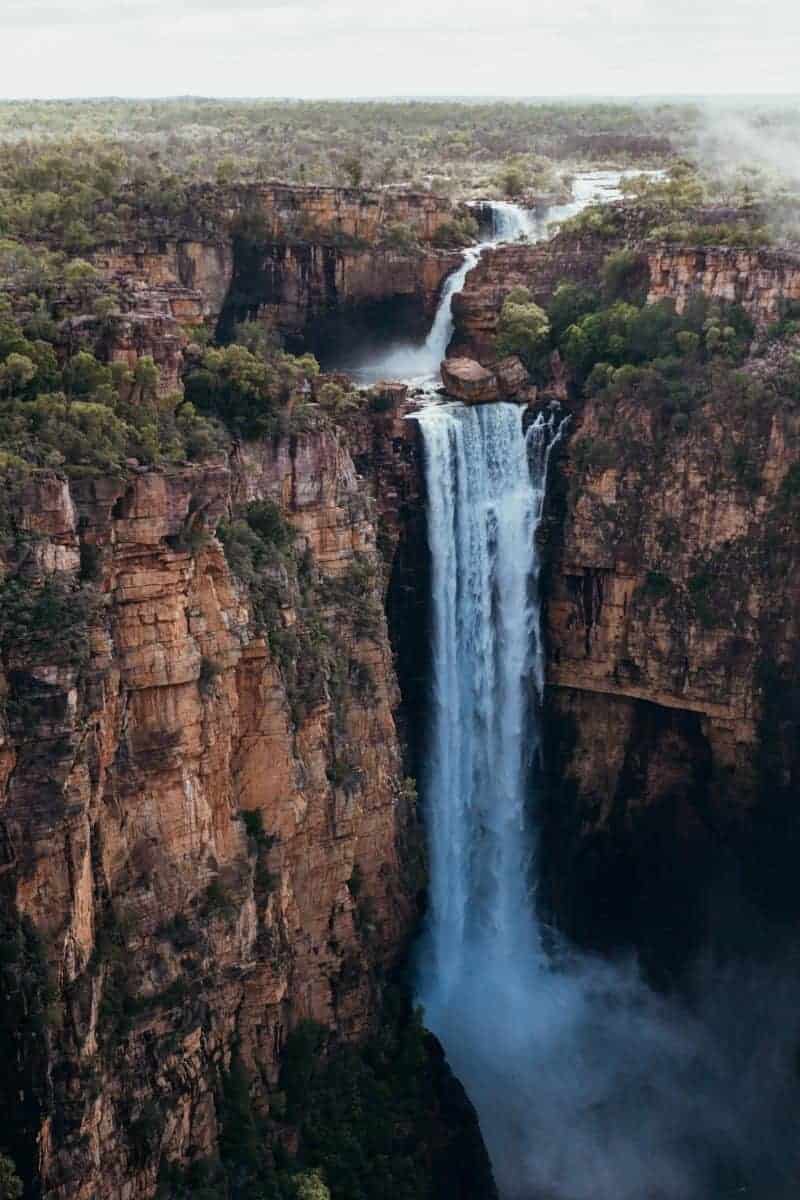
Waterfalls at Kakadu National Park
There are so many stunning waterfalls to choose from at Kakadu National Park its hard to know where to start. Some can be a little more difficult to access than others and depending on your family’s level of hiking, its always a good idea to check with the Bowali Visitor Centre to see which falls would best suit your family. Here are our picks that are easily accessible but still have spectacular views and perfect swimming holes.
Gunlom plunge pool
Only a 100 metre walk from the carpark this sandy beach-like pool is perfect for young families. A shallow entry means the smallest members can splash by the edge while the more adventurous can swim to the waterfall. Gunlom is a seasonal waterfall and best visited in the early dry season (May – June); however, the bottom pool remains swimmable usually until August-September. (Gunlom waterfalls pictured below)
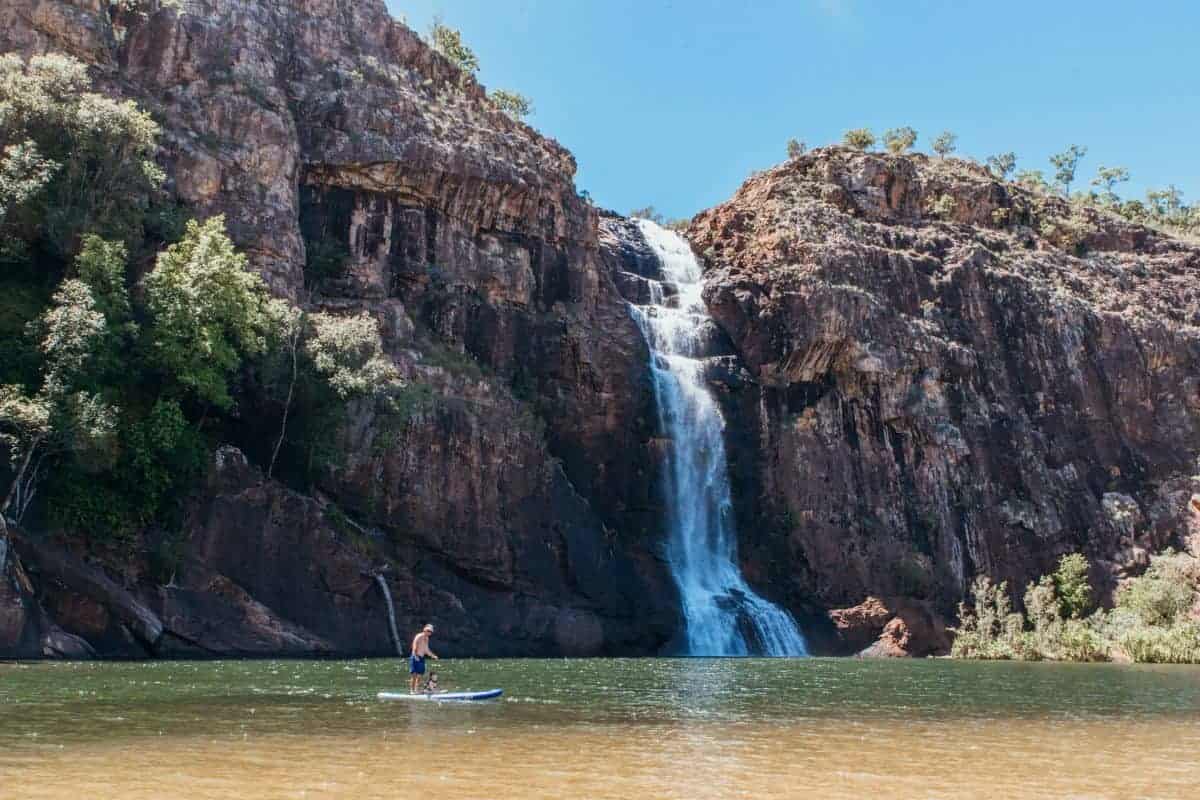
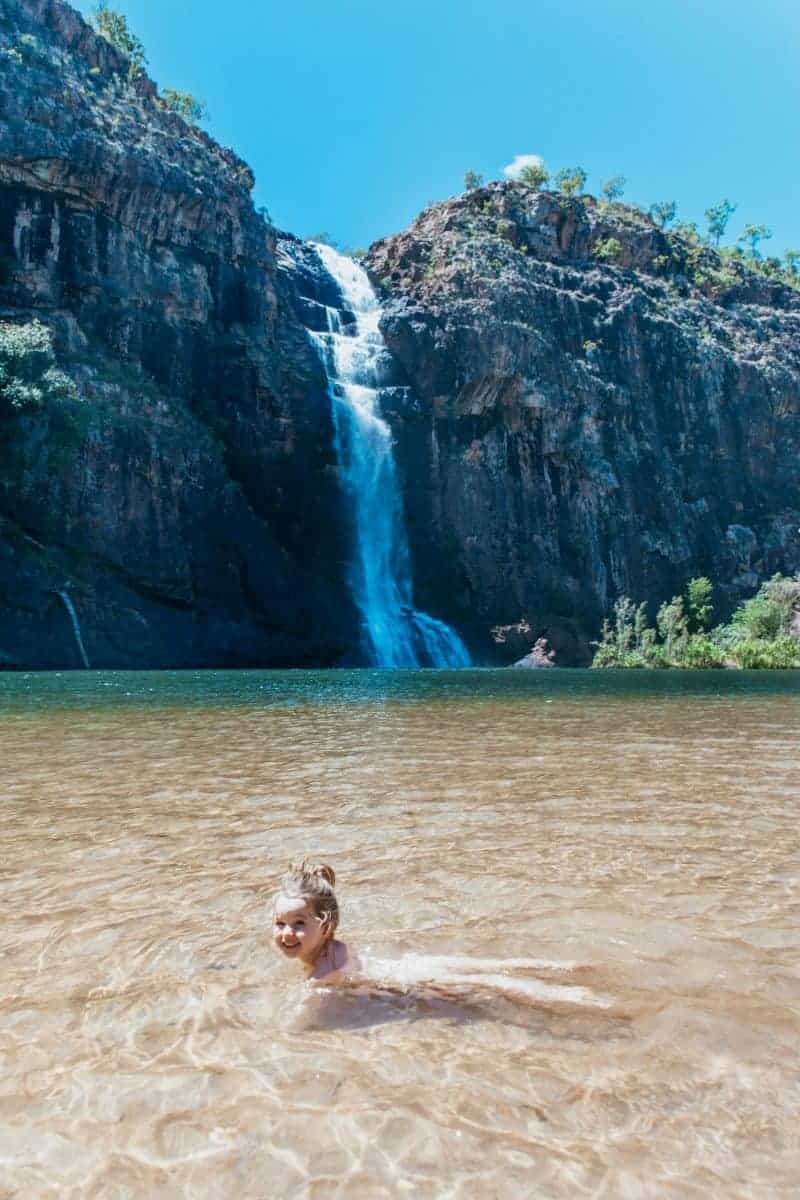
Maguk
Maguk requires a little more of a walk-in with a rocky 2km track. However, the effort is worth it when you reach the stunning turquoise pool. This waterfall is spring-fed so it flows year-round, which makes it a perfect stop even for travelers visiting later in the year when other falls start to dry up. Seasonal closures do still occur due to crocodile movement, so always check with the visitor centre before your visit.
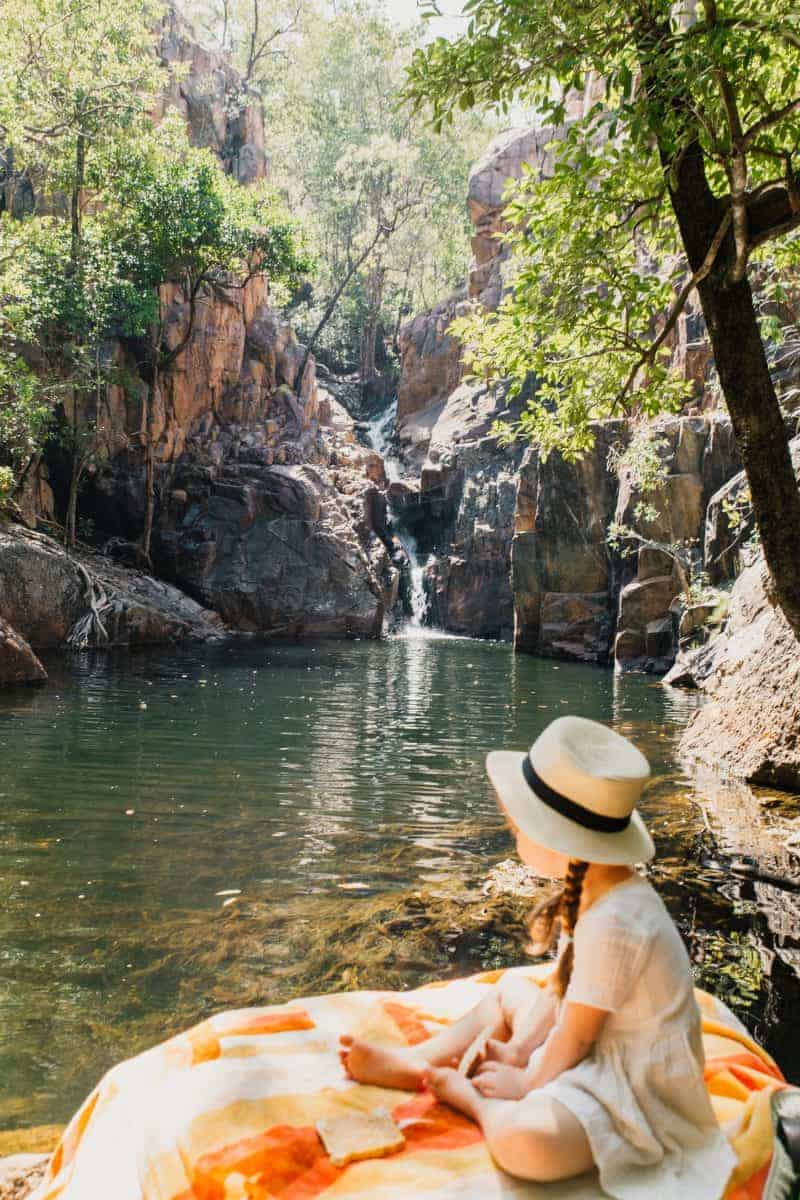
Igoymarrwa
Igoymarrwa is a small crystal clear plunge pool located in the southern end of the park. Although a short drive in from the main Kakadu Highway, you will still require a 4WD. The waterfall however is just a short walk from the carpark opening up to a lush little oasis. (Igoymarrwa pictured above)
Jim Jim and Twin Falls
If you happen to visit Kakadu during the wet season (October – April) a scenic flight over Jim Jim and Twin Falls is an experience you will never forget. You can choose between a light aircraft or helicopter, with flights leaving from both Jabiru and Cooinda airstrips.
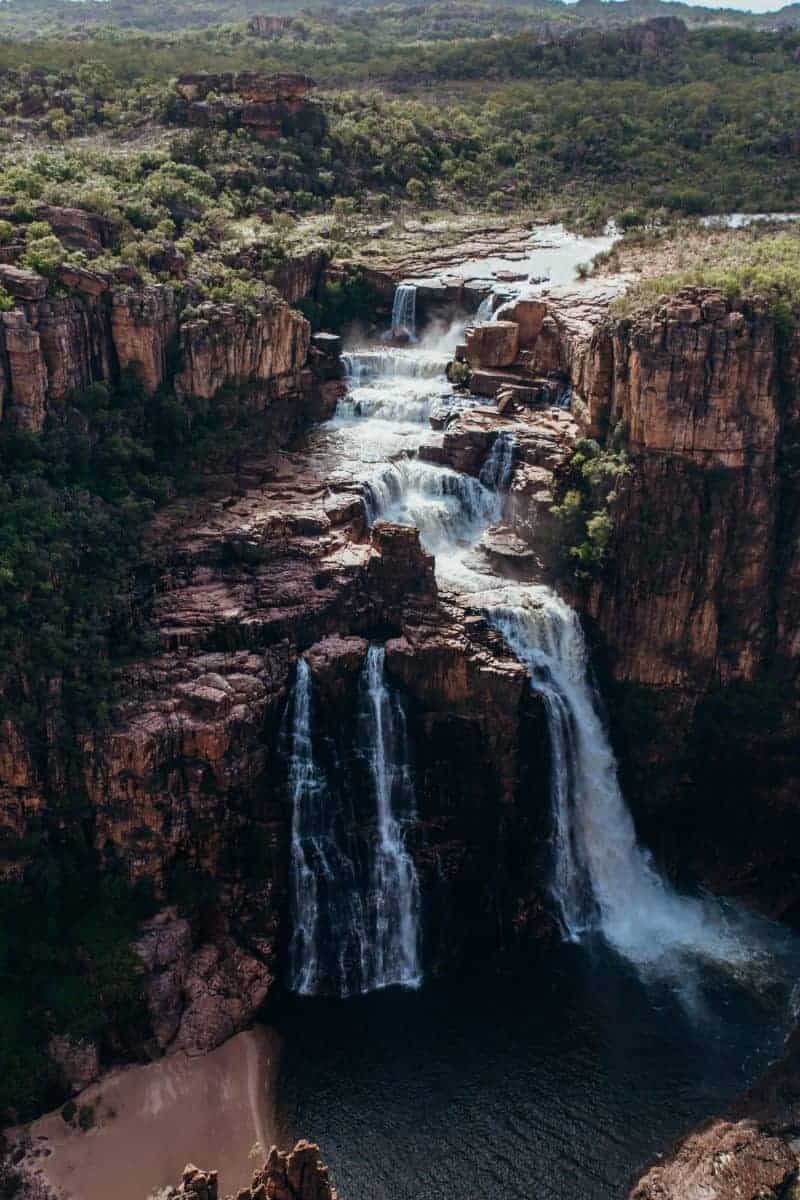
Magical sunsets at Kakadu
There’s a number of sites to take in the incredible Kakadu sunset but here are our top three.
- Gunlom Top Pools – Gunlom is perched at the top of a waterfall. You can take in not only some of the best views in Kakadu but watch as the sunset lights up the bush and surrounding escarpment.
- Ubirr Rock Art site – This point is overlooking the Nadab floodplain. It’s a stunning cultural site where you’ll feel as though you’re on a set from a movie scene. Channel your inner Lion King while watching the sun set into the horizon and the birds find their way to roost for the night. Ubirr is also home to some of the oldest artwork in the world, with galleries dating back thousands of years.
- Nawurlandja Lookout – Nawurlandja overlooks the mighty Burrungkuy rock and Anbangbang billabong. The sun here sets behind you but you have front row seats to a spectacular display as Burrungkuy escarpment transforms before your eyes with the setting sun. (pictured below)
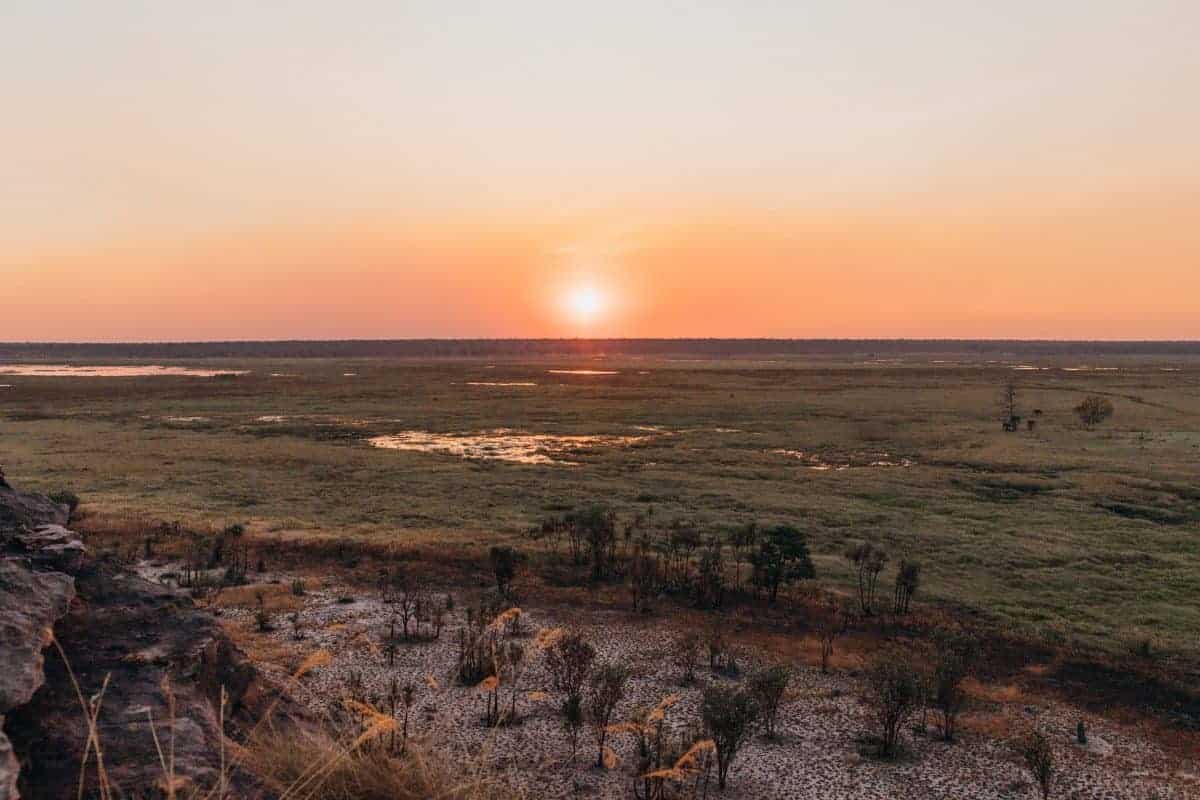
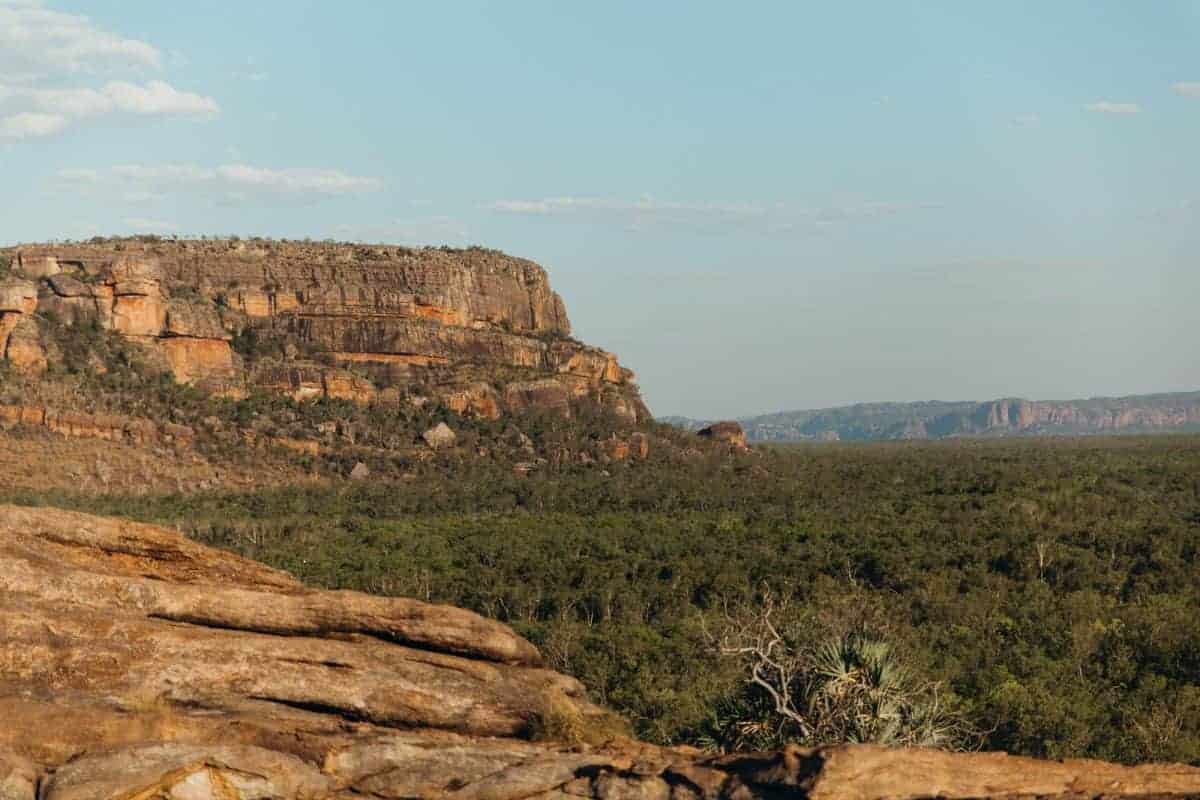
How to get to Kakadu National Park with kids
Kakadu National Park is approximately 250km south of Darwin. If you fly into Darwin you can hire a car to explore the park on your own terms. Alternatively, you can join one of the many tours on offer, but be prepared these are often rushed and on a strict time schedule. We recommend 5-7 days to explore the park at a leisurely pace and to really explore all Kakadu has to offer.
When planning your visit keep in mind the scale of the Park, 200km from North to South. Many attractions are a full day out. If hiring your own vehicle, we highly recommend a 4WD. While much of the park is still accessible via 2WD, it will limit the sites you can visit, particularly, the waterfalls.
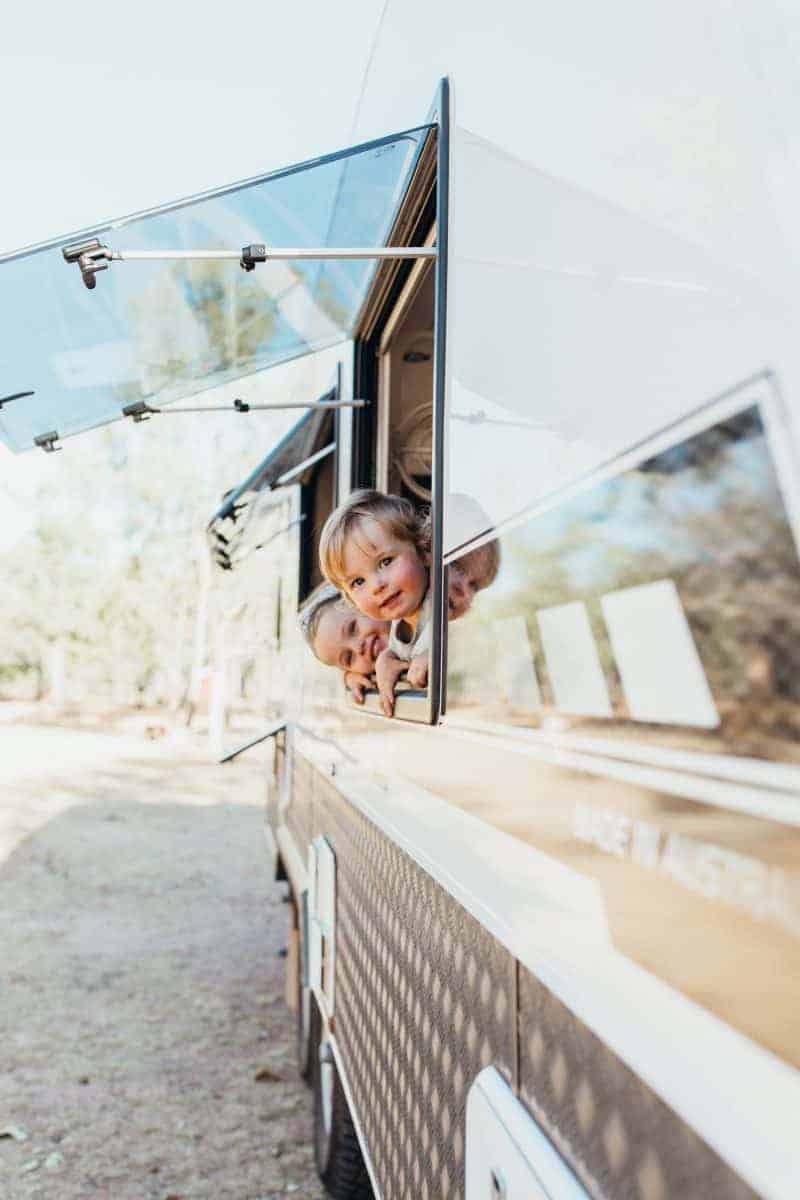
Where to stay at Kakadu National Park with kids
Kakadu National Park has a range of accommodation options to suit most budgets. Cooinda Lodge Kakadu, Aurora Kakadu Lodge and Caravan Park, and Anbinik Kakadu Resort all offer a range of air-conditioned cabins, eco tents or unpowered and powered campsites. For those looking for a little more luxury on their visit be sure to check out the Mecure Kakadu Crocodile Hotel, which has been built to resemble a crocodile!
There are, of course, many campgrounds throughout Kakadu if you have your own camping gear. We love the campgrounds at Gunlom, Mardukal, and Garnamarr.
It is always a good idea to check in with the staff at the Bowali Visitor Centre before your visit to get the most up to date reports on road conditions, site openings. You can also get more in-depth information about the walks, level of difficulty, and whether they are suitable for you and your family.
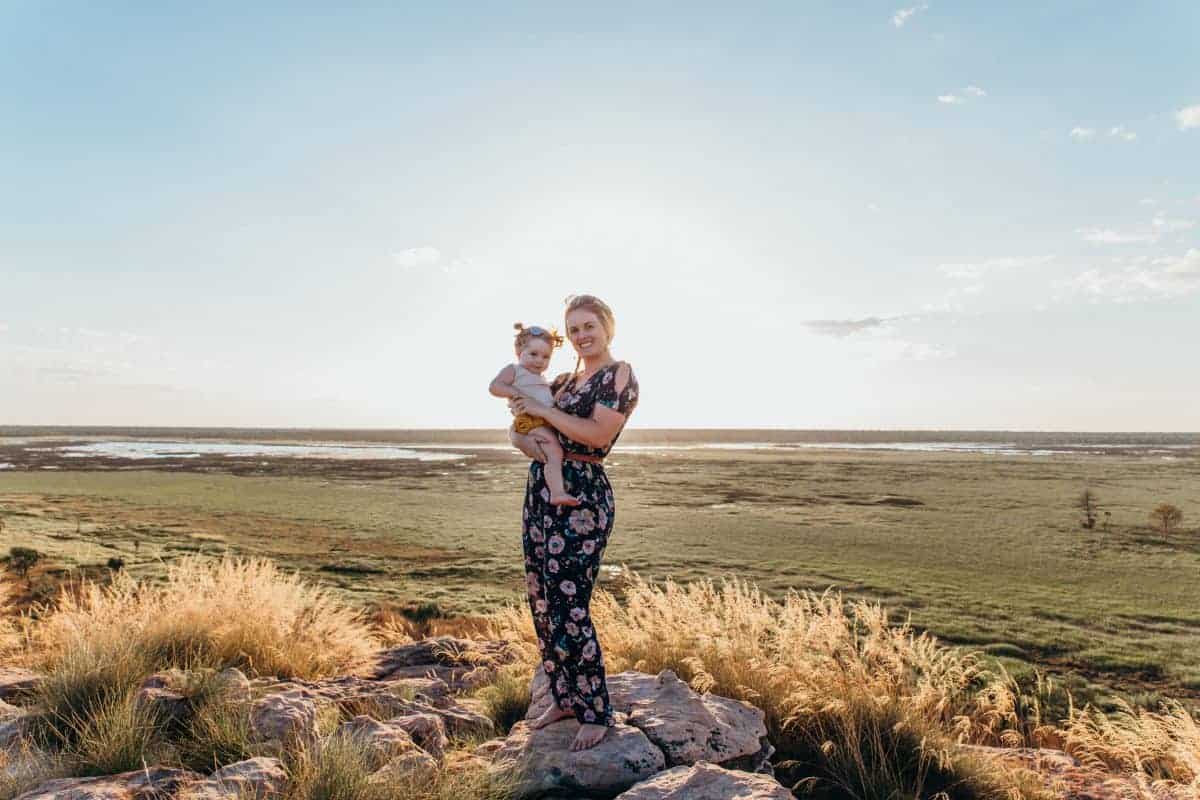
Our land has a big story. Sometimes we tell a little bit at a time. Come and hear our stories, see our land. A little might stay in your hearts. If you want more, you can come back.”
Jacob Nayinggul, Manilargarr Clan
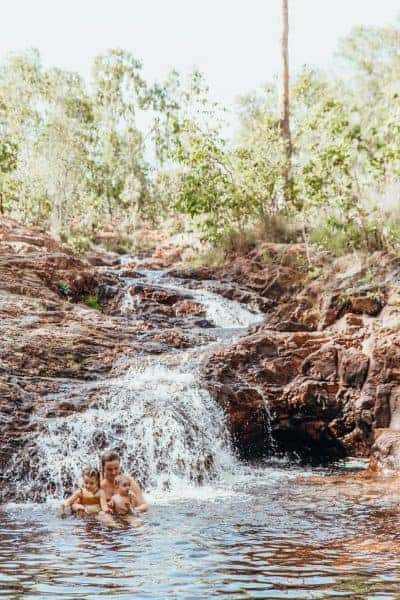
About the author
Jodie is a mum of two little adventurers living in the Top End of Australia. With a passion for nature and a lust for adventure, she is always exploring with her two littles in new and exciting places or special old favourites.
You can find more from Jodie online in the following locations:
Website: territorymama.com
Instagram: @territorymama
Comments
One response to “Kakadu National Park, Australia with Kids”
[…] – Guide to Kakadu National Park – Tourism Australia ( 2024-11-19 ) – Kakadu National Park, Australia with Kids • RUN WILD MY CHILD ( 2020-10-08 ) – 17 Things to KNOW before Visiting Kakadu National Park, Australia ( 2024-05-23 […]

Leave a Reply